 Museum
Museum  |
Bomber Command
|
Aircrew Chronicles
|
Aircrew Losses
|
Nose Art
|
BCATP
|
Lancaster
|
Media
|
Bomber Command
|
Aircrew Chronicles
|
Aircrew Losses
|
Nose Art
|
BCATP
|
Lancaster
|
Media
 Museum
Museum  |
Bomber Command
|
Aircrew Chronicles
|
Aircrew Losses
|
Nose Art
|
BCATP
|
Lancaster
|
Media
|
Bomber Command
|
Aircrew Chronicles
|
Aircrew Losses
|
Nose Art
|
BCATP
|
Lancaster
|
Media
Bomber Command Museum Archived Newsletters
 Download Printable Version
Download Printable Version
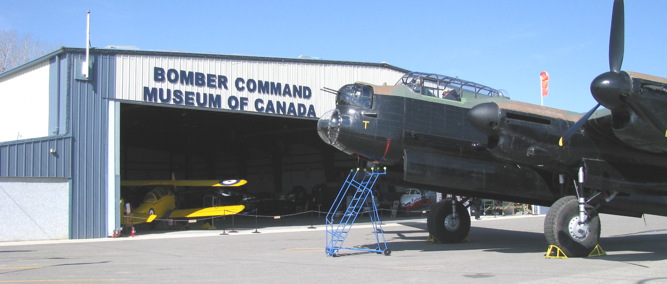
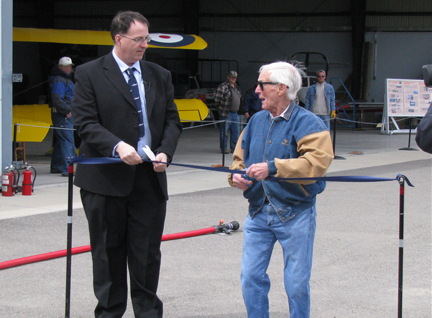 gets ready to cut it officially recognizing the name change. |
During a ceremony on the "Sixty-fifth Anniversary of Victory in Europe Day," May 8, 2010, the museum's name was changed to the Bomber Command Museum of Canada. A ribbon was cut below the new signage on the hangar to symbolize this significant point in the museum's development. The ribbon was cut by Bomber Command veteran, Bill Hume DFM, of Claresholm, Alberta. Born in Scotland, Bill trained as an airgunner for six weeks. Rather than being posted to an Operational Training Unit, he was told, "We're short of gunners. You're going right to a squadron." |
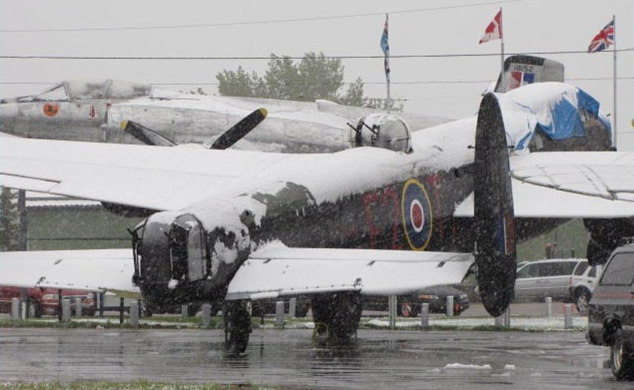
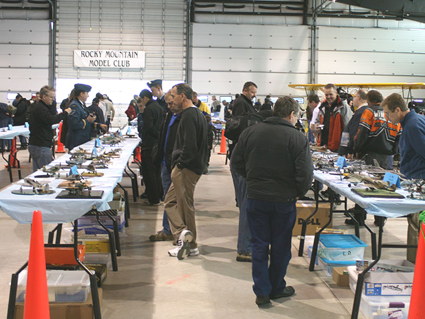 |
The morning of May 29, 2010, the day scheduled for this event, saw everything covered in wet snow! The photo above shows the Lancaster aircraft with a coating of the white stuff. This aircraft had been moved out of the museum in order to make room for Rocky Mountain Model Club to set up tables for the Western Canadian Regional Model contest the following day. A view of some of the tables of exhibited models along with participants and visitors. |
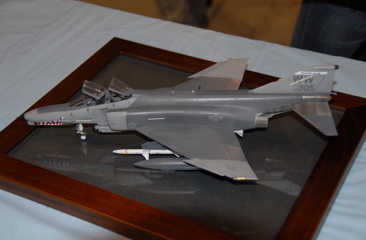
|
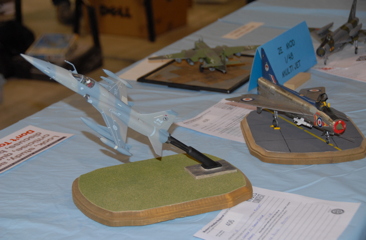
|
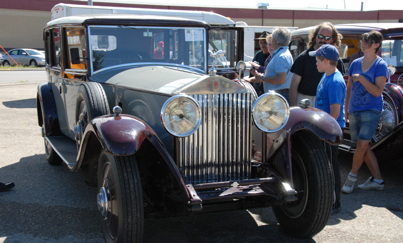 [ Garl Orde photo ] |
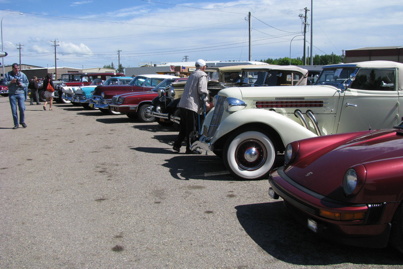 [ Garl Orde photo ] |
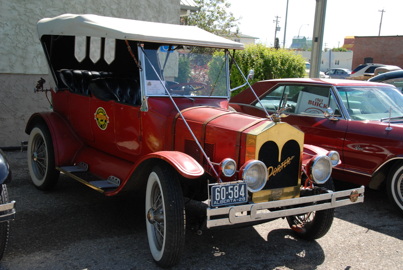 [ Garl Orde photo ] |
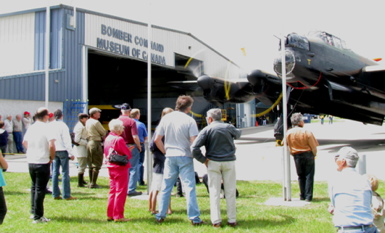 and as a tribute to the memory of a WWII bomber crew who perished while serving. (See below.) |
W/O Thomas Herbert Warne, RCAF, was the only Canadian crew member of Lancaster W4270 when it crashed near Staunton in the Vale, near Newark, England, February, 1943, after returning from an operations training flight, killing all on board. He was honored on July 2, 2010, when a wreath was laid next to his name on the museum's Memorial Wall. Lancaster FM159's two overhauled Merlin engines were then run-up as a part of the tribute. The crash of Lanc W4270 was researched in 1999 by local residents of Staunton on the Vale, and a memorial was placed next to their church, by the village residents in memory of the seven crew members who perished. The other six of the crew were British. On July 3, 2010, this memorial was rededicated. Part of the ceremony in England was a fly-by of the Battle of Britain Memorial Lancaster. |
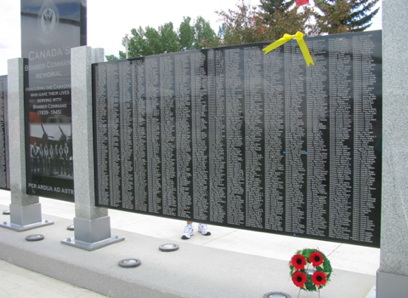
|
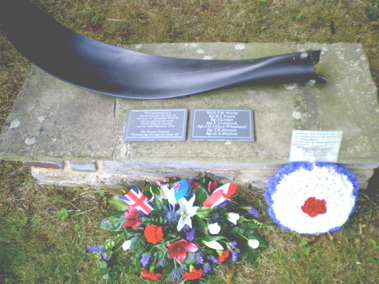 The Staunton on the Vale Memorial which was rededicated July 3, 2010, the day after the wreath was laid at BCMC Memorial Wall in Nanton, Alberta. |
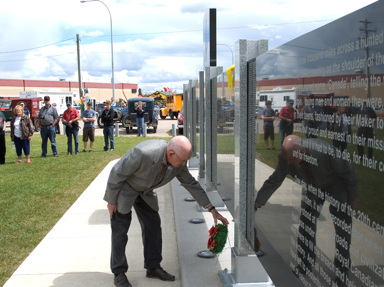 Museum curator Bob Evans lays a wreath at the Memorial Wall near the name of W/O2, Thomas Herbert Warne, RCAF, who was KIA February 194, with all his crew. |
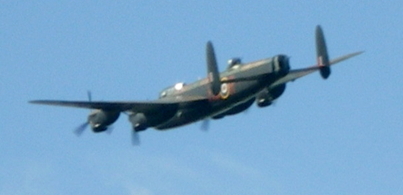 |
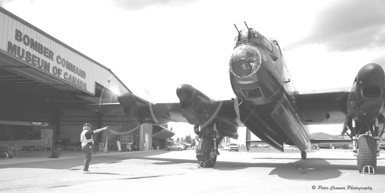 Lancaster FM159's Merlins run-up. |
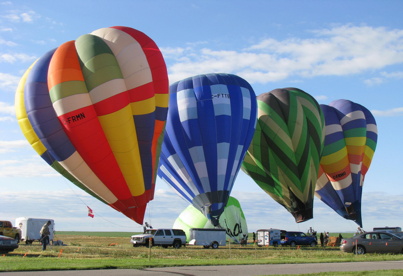 |
The museum's annual fly-in was held July 17 at the AJ Flying Ranch. This annual event was the brainchild of WWII Lancaster pilot and founding member of the museum society, Joe English, more than a decade ago. Sadly, Joe passed away last January. This annual event will forthwith be known as the "Joe English Memorial Fly-in." This, being the first year with this new designation, saw twenty plus members of Joe's family present for the event which drew 60+ aircraft to partake of the pancake breakfast served by the Nanton Lions Club. The day started shortly after 7:00 a.m. with six hot air balloons taking off into a perfect July morning. The aircraft attending varied from vintage to home-built to modern. The last arrival was a Dromader crop duster, owned by Wayne Steir (WASP) Aerial Applicators flown by Ben Loree. It sports a 1000 H.P. Polish-built radial engine. |
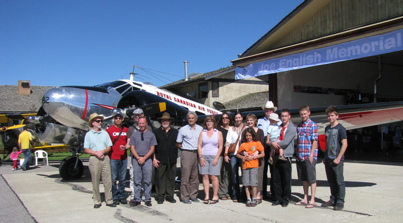 pose in front of the Sun West Aviation Beech Expeditor aircraft, which has been a attendee of nearly all the Society's past fly-ins. |
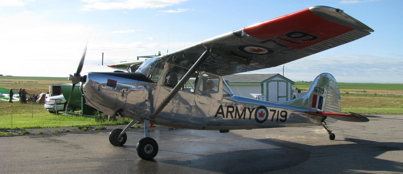 was one of the first arrivals. |
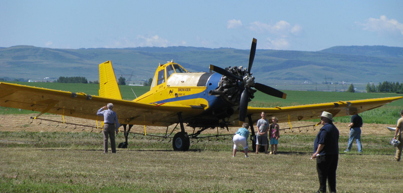 |
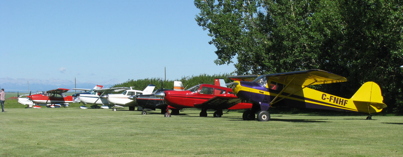 the first Joe English Memorial fly-in. |
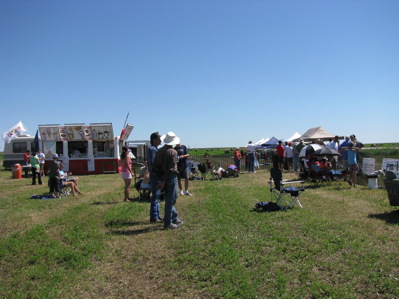 The encampment for the RC Jet event. |
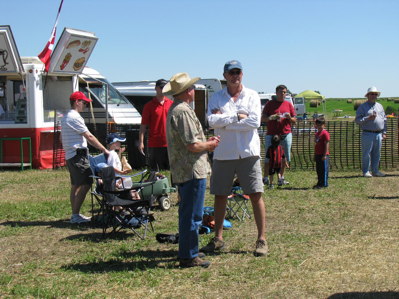 The winner (center in the straw hat) of a draw for a ride in a Stearman stands talking to Alex Bahlsen, owner of the AJ Flying Ranch who had donated the ride. |
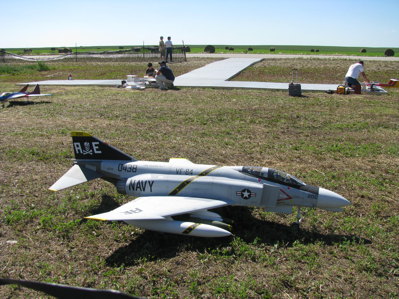 One of the RC jets in the foreground with the portable "tarmac" in the background where two Jets are being readied for takeoff. |
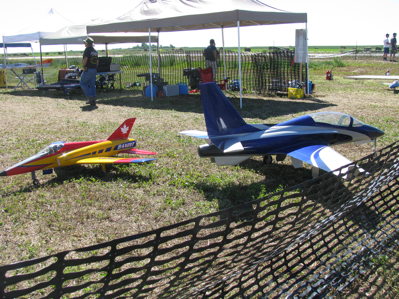 More mini-jets waiting to be flown. |
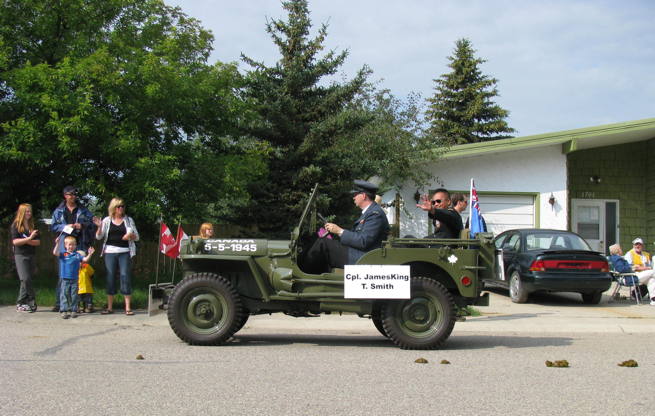
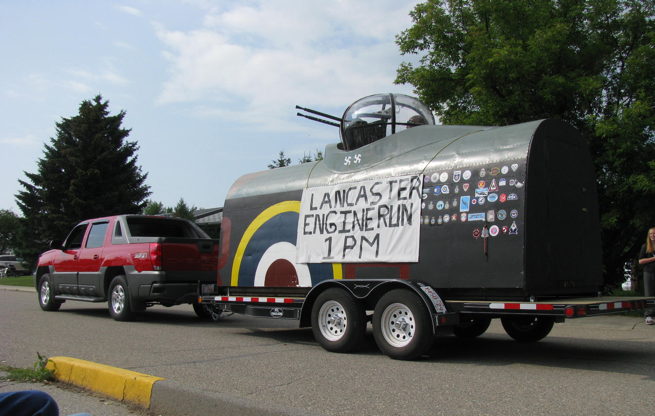
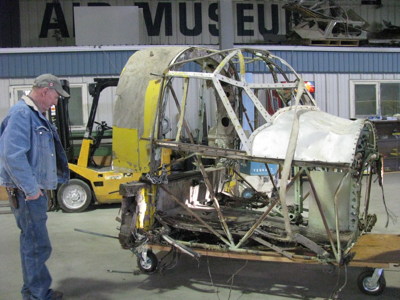 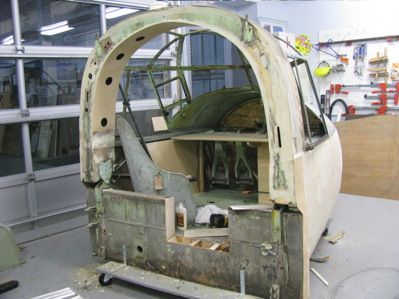 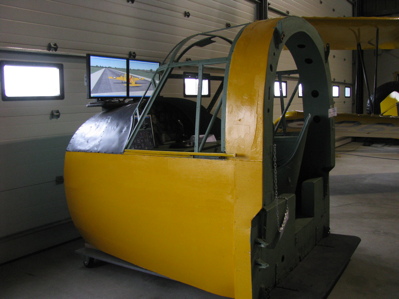
|
As mentioned in the Spring Newsletter, your curator took on a project to create a flight simulator as a hands-on display in the museum. The photos show the results of taking a derelict Mk.V Anson cabin section and rebuilding it to house a flight simulator. This Sim is now in operation and there has been a lot of interest by visitors, both young and older. The curator has now started on a second Sim, which will be housed in the cut-off cabin of a Cessna Crane (Bamboo Bomber). Present plans are to install a "shoot-em-down" simulator display, but we may reconsider before the Sim is completed. This project should be ready for "flight" by April if all goes well. These three photos (left) show the stages of condition of the Mk.V Anson cabin section as it was converted into a flight simulator body as a "hands-on" display for use by visitors to the museum. 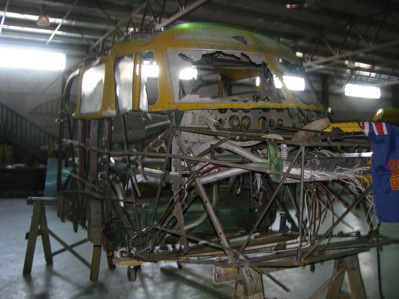 This Cessna Crane forward fuselage is being converted and restored for use as the hbody of a second flight simulator for the museum. |
|
A plan by the Alberta Aviation Museum (AAM), Edmonton, Alberta, to visit all the existing British Commonwealth Air Training Plan (BCATP) bases in the province started off September 2. The small bi-wing Kelly D sports plane was piloted by Tom Hinderks, Executive Director of AAM, and Curtis Peters from Calgary. Leaving Edmonton, they either stopped or over-flew five former BCATP Bases ending up late afternoon at Springbank, on the first leg of this ambitious plan. Inclement weather forced them to hangar the biplane over night at Springbank near Calgary rather than continue on to the former base near Vulcan as planned. The pilots, along with their ground support crew, drove to Nanton where accommodation had been arranged for the night. After having supper with Bomber Command Museum volunteers, they toured the museum. |
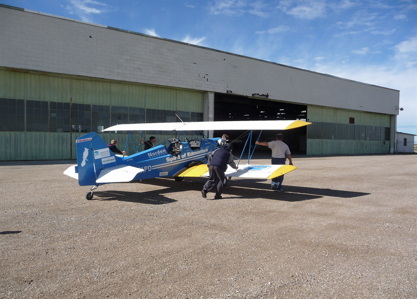
|
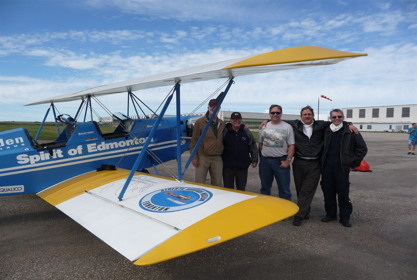 L to R standing beside the "Spirit" are: Rod Macleod, Edmonton Aviation Heritage Society president; Tink Robinson, BCMC director; Marv Kowalchuk, president of the Alberta Aviation Museum Assoc; Tom Hinderks, executive dicrector of AAM, and Curtis Peters. (Rod and Marv were ground support crew.) |
The crew was off early to Springbank the morning of September 3. Then biplane arrived at the old base near Vulcan, 19 miles east of Nanton, in the late morning. Some of our museum volunteers were on hand to greet them. With high winds and the forecast of approaching bad weather, the Kelly D was left in the hangar owned by John Sands until the next day. John, who flies his own airplane, also owns and maintains the old runways. Due to the forecast bad weather a decision was made to terminate the planned flights south to Claresholm, Medicine Hat, etc. Early the morning of September 4, they headed for Brooks and ended up late in the day at Penhold. There the aircraft was to remain for nearly a week due to the bad flying conditions. We understand that AAM will try again next year to visit the bases that were missed this summer. |
In the photo, museum past president, Dan Fox, accepts a donation of $225 from Drew Harris, a very young visitor. Drew's friend, Bobby Hvistov stands by. The donation was Drew's savings, which he had accumulated to do something special with while on holidays. He and his parents were visiting the air museum on June 6, to see the D-Day running of the Lanc's two Merlin engines, when he made the decision to donate the whole $225. After a discussion with his parents, he was adamant this was where he wanted the money to go. For his generosity, Drew was allowed in the Lancaster cockpit with the engines were started up! He became the youngest person to ever help start FM159's Merlins. A grateful THANKS to Drew for his help! |
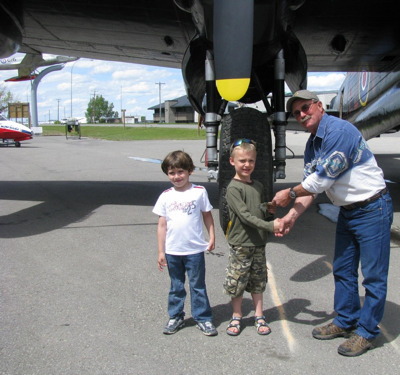
|
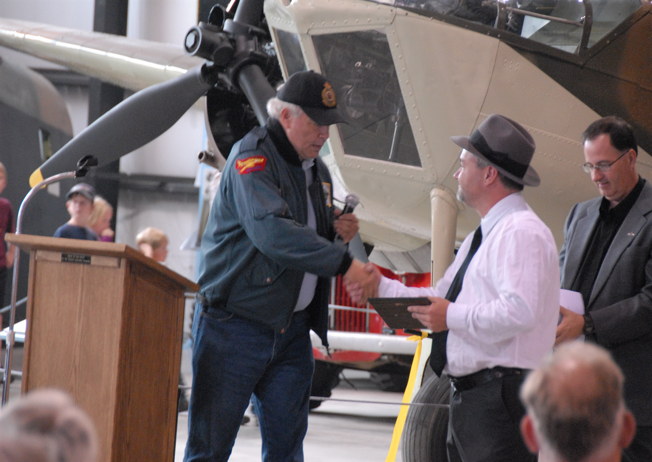
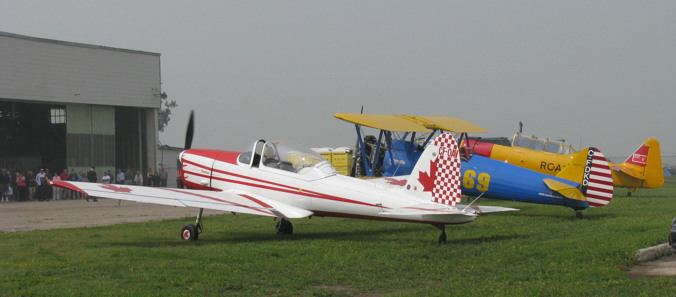

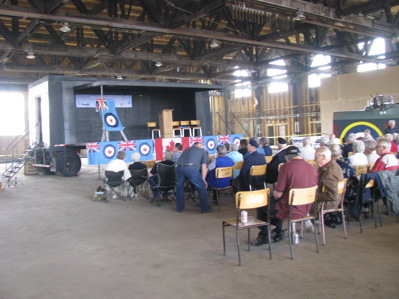 Visitors seat themselves in the BCATP hangar for the ceremony saluting the wartime instructors. |
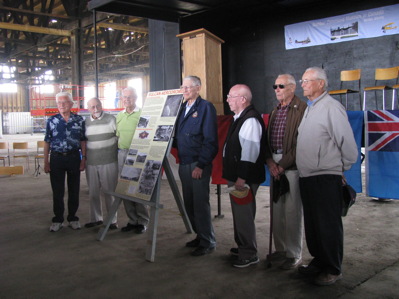 Seven former BCATP instructors stand together in one of the hangars at the wartime training base near Vulcan, AB. |
< Ted Barris, jornalist, broadcaster and author is seen here speaking August 20, at the Vulcan Aerodrome event. He was also guest speaker the next day at the Salute to the BCATP intructors ceremonies held in the Bomber Command Museum. |
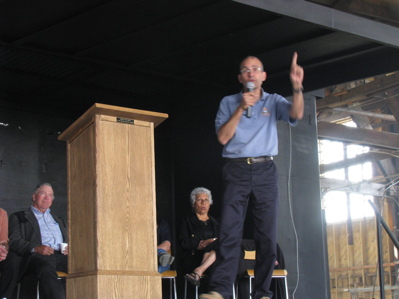
|
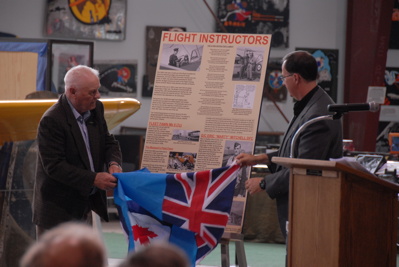 telling the instructors story. |
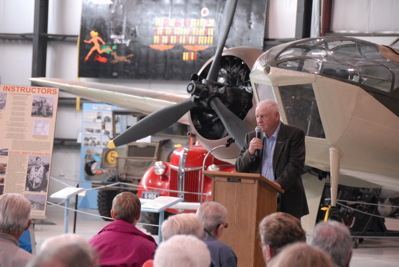 spoke about his experiences as an instructor during the war. |
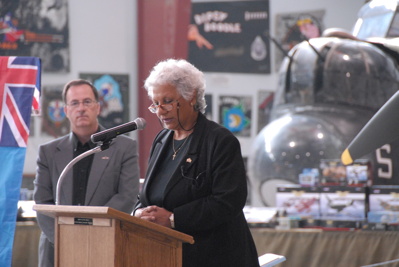 of those airmen who spent the war years teaching others to fly. |
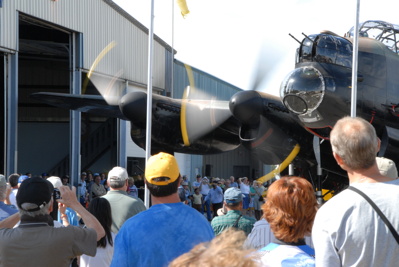 being run-up. |
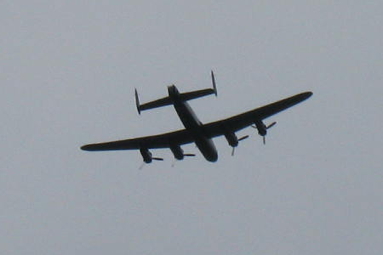
|
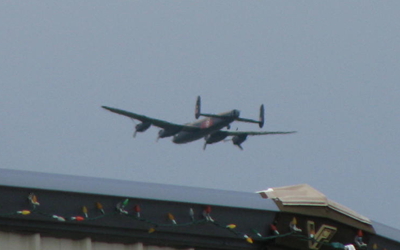
|
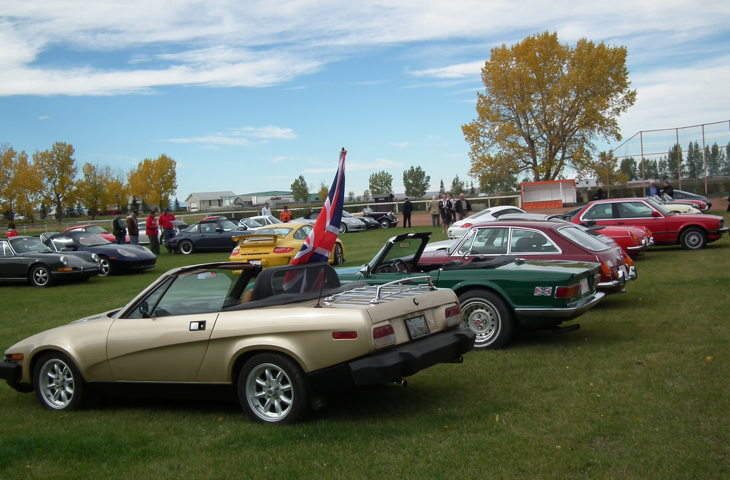
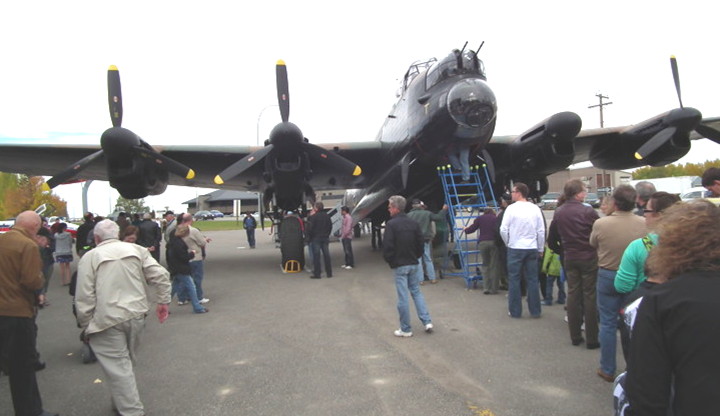
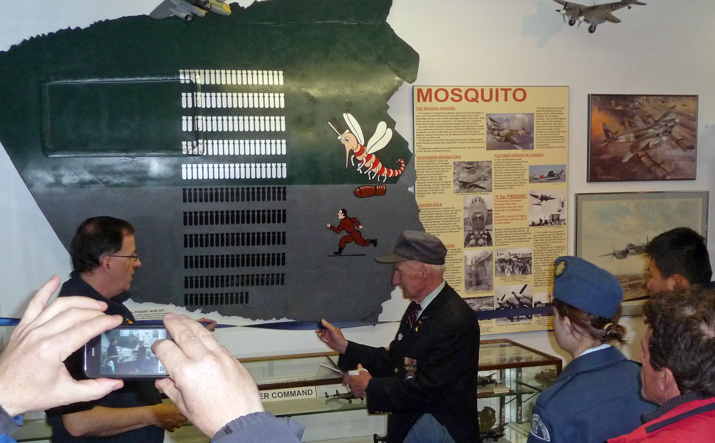
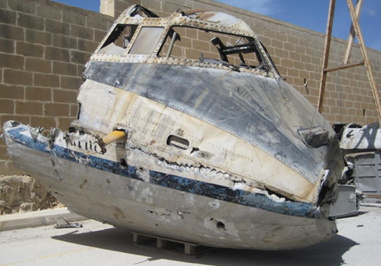
|
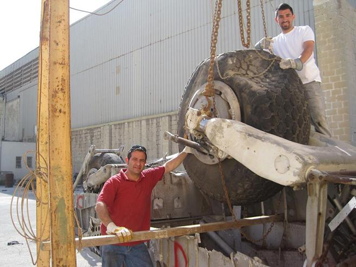
|
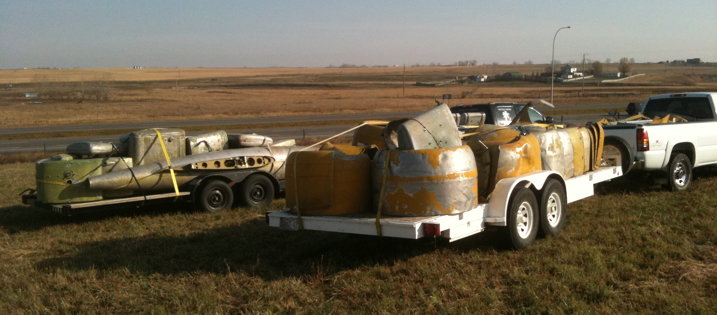
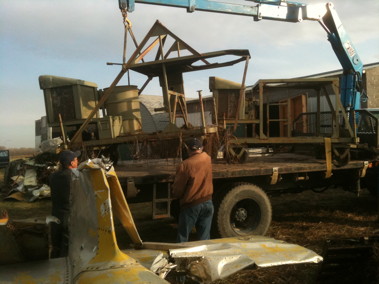
|
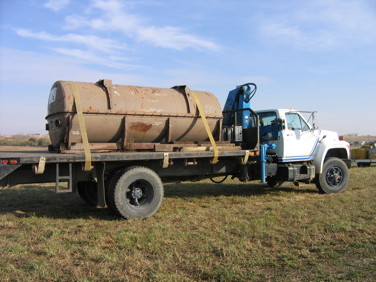
|
The Anson is making remarkable progress. For the longest time it seemed like for every piece that we finished 10 more would pop up and need restoration. Currently the original Rudder is approximately 75% complete. Two ribs, plywood covering and some fabric are all that stand in the way of Annie getting a newly restored rudder. The rudder when finished will be well over 80% original. A remarkable feat, I think, considering the piece had been stored for many years and had become the comfortable home for many a mouse. In addition to the rudder, restoration has begun on the tail plane and continues on the fuselage. In the next newsletter I hope to be able to show progress pictures on the tail plane and perhaps a completed cockpit and an aft fuselage full of formers and stringers. |
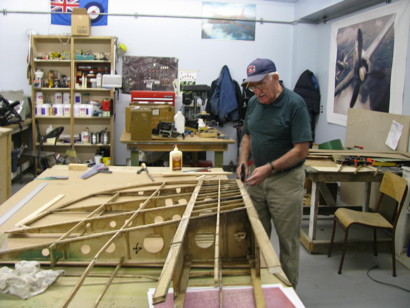 Some 75% of the original wood that is sound will be left in place. |
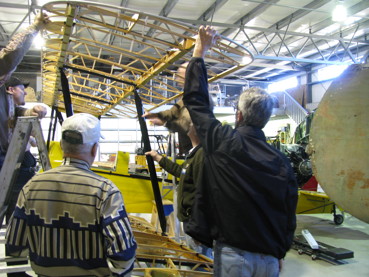 |
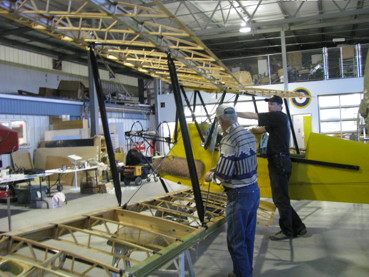 check the final rigging of the wings. |
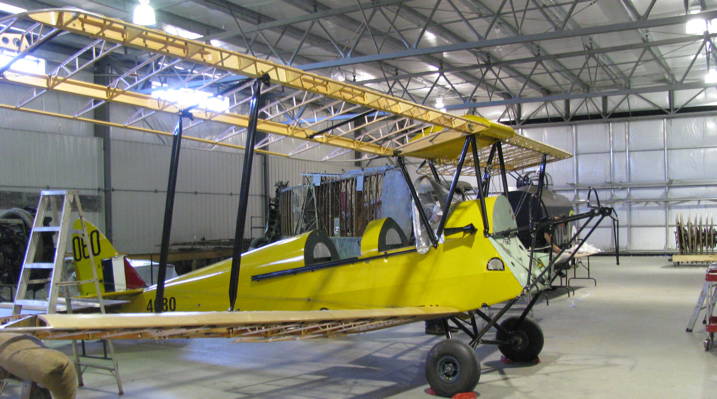
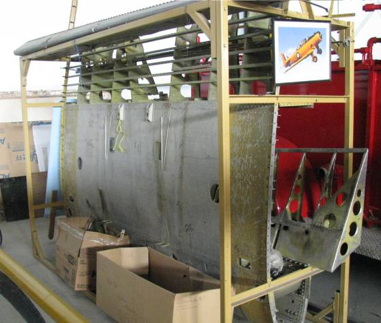
|
This project has not been moving quickly enough in the last year or so for several reasons, including locating a fabricating shop to make up a new wing centre-section main spar. That is about to change. We will be consolidating all Yale parts in the museum this winter, including the restored rear fuselage, forward tubing section, engine mount, etc. These will be mated together on a spare wing center-section as a static display, ready for viewing in the spring. New signage dedicating this project to the memory of the late Jonathon Spinks will be made up to go with the display. Yale center section awaiting a new spar. |
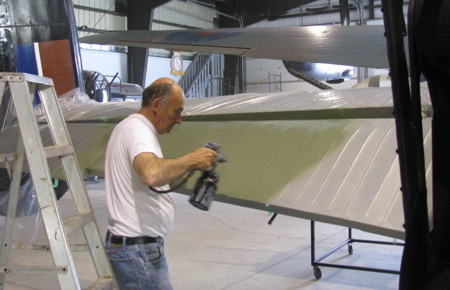
|
Visitors view the Tutor during one of the summer events. Volunteer, Maurice Galli, spent one winter applying SnowBird colours to it. |
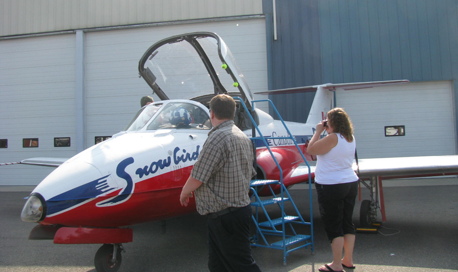
|
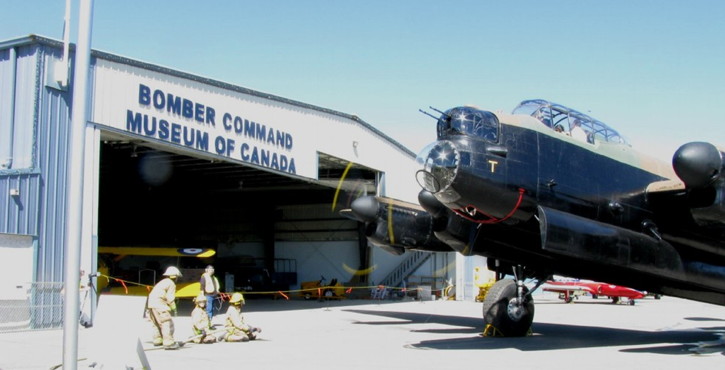
|
Victor Polichek Vernon, B.C. George Lammiman Winnipeg, Manitoba John A. Murphy Abbotsford, B.C. Trevor E. Schubert Kamloops, B.C. Harry Volk Calgary, Alberta |
Hazel Watt Nanton, Alberta Joe Sheriff Creston, B.C. Lyle F. James DFC Sarnia, Ontario Deryck Bazalgette Devon, England John Donald Clay Calgary, Alberta |
Noel W. Hodkin Powell River, B.C. John H. Stevenson Lethbridge, Alberta Lionel Eddy Nanton, Alberta Willemena Dozeman Nanton, Alberta |